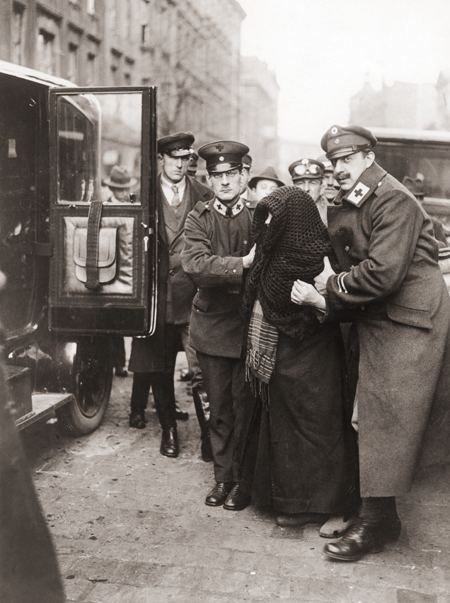|
Red Cross Workers Escort an Elderly Voter to the Polls during the Referendum in Upper Silesia (March 20, 1921)
Article 88 of the Versailles Treaty stipulated that plebiscites were to take place in several prewar German territories in order to determine whether they would remain part of Germany. Germany’s eastern border was a particularly controversial topic. In the Prussian province of Upper Silesia, a highly industrialized area rich in natural resources, there had been repeated armed uprisings to bring about the territory’s accession to Poland. The province was initially occupied by French, British, and Italian troops until a plebiscite was held on March 20, 1921, in which the local population was to decide whether the province would remain part of Germany or join the new Polish state. This photo shows German Red Cross workers helping an elderly woman into a car in order to take her to a polling station. Obviously, both sides were eager to encourage as many voters as possible to participate in the referendum. At almost 98%, voter turnout proved very high, and 60% voted for remaining part of Germany while 40% wished to join Poland. The result, which clearly favored Germany, was rejected by Polish nationalists, and on May 3, 1921, Polish partisans supported by French occupation troops organized an armed uprising to force the territory’s accession to Poland. In addition to police units, the German government also deployed several of its previously disbanded Freikorps. The conflict ultimately resulted in the partition of Upper Silesia, whereby the Allied Council determined that its larger but exclusively rural area would remain German, while its industrialized part would become Polish.

|


